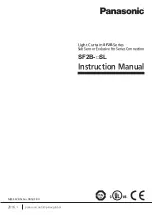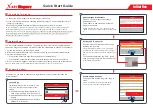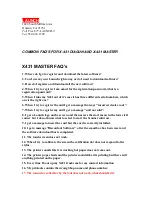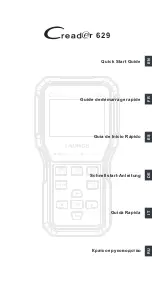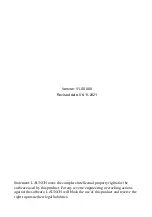Summary of Contents for HI 903
Page 1: ...1 QUICK START GUIDE HI 903 KARL FISCHER VOLUMETRIC TITRATOR Revision 1 0 ...
Page 4: ...4 QUICK START GUIDE ...
Page 7: ...7 QUICK START GUIDE TITRATOR CONNECTIONS Front View Rear View ...
Page 18: ...18 QUICK START GUIDE QS 903 02 11 ...
Page 19: ...1 INSTRUCTION MANUAL HI 903 KARL FISCHER VOLUMETRIC TITRATOR Revision 1 00 ...
Page 22: ......
Page 24: ...1 2 INTRODUCTION ...
Page 26: ...2 2 SETUP ...
Page 30: ...2 6 SETUP 2 3 2 Titrator Rear View 2 3 3 Titrator Left side View ...
Page 40: ...2 16 SETUP ...
Page 42: ...3 2 USER INTERFACE ...
Page 50: ......
Page 52: ...4 2 GENERAL OPTIONS ...
Page 64: ......
Page 92: ......
Page 94: ...6 2 TITRA TITRA TITRA TITRA TITRATION TION TION TION TION ...
Page 106: ...6 14 TITRA TITRA TITRA TITRA TITRATION TION TION TION TION ...
Page 118: ...8 2 MAINTENANCE PERIPHERALS ...
Page 147: ...A1 1 APPENDIX 1 Appendix 1 Contents A1 TECHNICAL SPECIFICATIONS A1 3 ...
Page 148: ...A1 2 APPENDIX 1 ...
Page 152: ......
Page 155: ...A3 1 APPENDIX 3 Appendix 3 Accesories A3 TITRATOR COMPONENTS A3 3 ...
Page 156: ......
Page 159: ...1 GENERAL APPLICATIONS BROCHURE HI 903 KARL FISCHER VOLUMETRIC TITRATOR Revision 1 00 ...
Page 160: ......
Page 161: ......
Page 163: ......
Page 165: ......
Page 167: ......
Page 169: ......
Page 171: ......
Page 173: ......
Page 174: ......
Page 175: ......
Page 177: ......
Page 179: ......
Page 181: ......
Page 183: ......
Page 185: ......
Page 187: ......
Page 189: ......
Page 192: ...2 TITRATION THEORY ...
Page 194: ...4 TITRATION THEORY ...
Page 206: ...16 TITRATION THEORY A B Figure 8 Potential glass electrode mV C ...


















